Hoi An, Vietnam: 15 Places to Visit & Things to Know
Hoi An Ancient Town located in Quang Nam province, is a famous tourist city in Vietnam that has now gained international recognition for its unique charm found nowhere else. Situated about 30 km south of the city center of Da Nang and bordered by the East Sea to the east, Hoi An enjoys an exceptionally favorable geographical position, making it one of the world’s top tourist destinations. Let’s explore some fascinating information and places to visit Hoi An Ancient Town and places to visit together with SVietnam Travel.
Read more: 6 Top Tourist Attractions in Hoi An
A Brief Overview of Hoi An – Vietnam
Hoi An was founded in the late 16th century under the reign of the Le Dynasty. During the 17th and 18th centuries, it flourished as a bustling international trading port in Southeast Asia, attracting merchants from all over the world. However, the prosperity of Hoi An declined over time, almost falling into oblivion, and the city of Da Nang took over as the thriving trading hub.
Read more: 14 Best Restaurants in Hoi An Ancient Town
This fortunate turn of events preserved Hoi An during the upheavals of the 20th century, including two wars and urbanization. Consequently, Hoi An managed to retain its original beauty and charm.
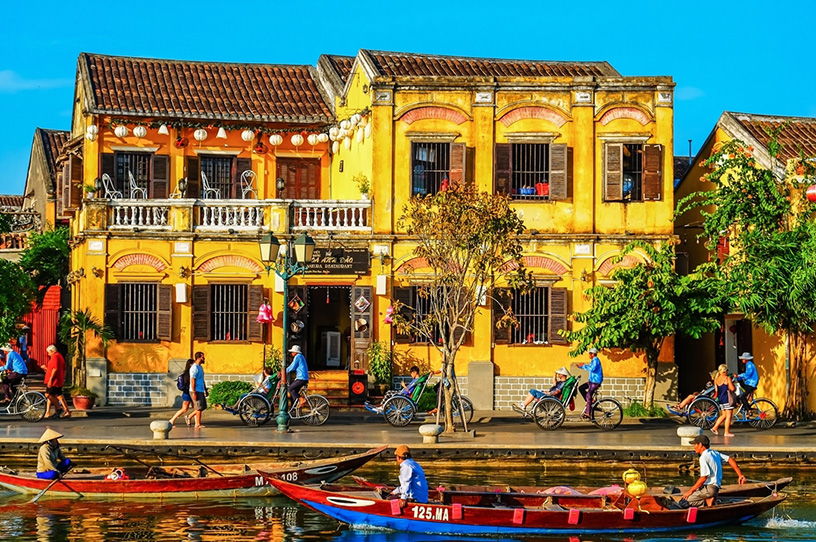
On December 4, 1999, UNESCO recognized Hoi An Ancient Town as a World Cultural Heritage site. Since then, Hoi An has become a popular destination, attracting a large number of international tourists.
Read more: 7 Top Tourist Attractions in Hue city
Best Time to Visit Hoi An
Hoi An’s climate combines elements from both the southern and northern regions of Vietnam, with two distinct seasons – rainy and dry. Each season presents Hoi An Ancient Town with its own unique beauty:
The first three months of the year are considered the ideal time to explore Hoi An. The weather is pleasant, with mild sunshine and occasional light rains, making it perfect for strolling or cycling around the town.
From April to July, Hoi An experiences the peak of the dry season, and although the weather is still pleasant, this is the period of domestic tourism peak, so the town can get quite crowded.
The last three months of the year mark the rainy season in Hoi An, characterized by less sunshine, heavy rains, and occasional flooding.
Read more: Best Time To Visit Vietnam (Including cities)
How to Get to Hoi An?
Hoi An does not have its own airport, so travelers need to fly to Da Nang Airport first. From there, it’s a convenient 30-kilometer drive to Hoi An by car, taking around 40 minutes to reach the town.
Read more: Beauty of Golden Bridge – Ba Na Hills (Da Nang, Vietnam)
Transportation in Hoi An
To get around Hoi An, you can use bicycles or rent motorbikes from hotels, homestays, or other shops at a reasonable price. If you’re staying close to the center of Hoi An Ancient Town, walking is also a great option, allowing you to easily take photos and browse through the handmade craft products sold along the streets.
Another fun and popular way to explore Hoi An is by taking a cyclo ride, which can accommodate up to two passengers. Many tourists opt for this charming experience.
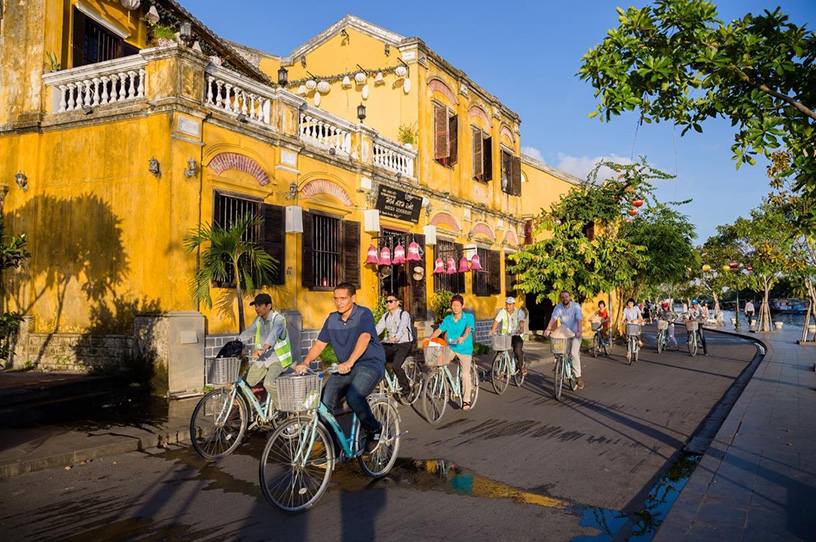
Best Attractions in Hoi An Ancient Town
Japanese Covered Bridge
When mentioning the ancient town of Hoi An, it’s impossible not to mention the Japanese Covered Bridge (also known as the Japanese Pagoda Bridge). This is a “classic” architectural piece in Hoi An built by the Japanese in the 17th century. The bridge spans over a small creek, with a temple on top characterized by its delicate and unique design.
The Japanese Covered Bridge is considered the symbol of Hoi An’s ancient town. This famous tourist spot is often chosen by visitors for photography whenever they come to Hoi An. Moreover, the image of this distinctive bridge is also printed on the 20,000 Vietnamese currency banknote.

Tan Ky Ancient House
Tan Ky Ancient House is the oldest traditional house in Hoi An’s Old Quarter, with an age of over 200 years. It was once the residence of the distinguished Le family and has retained its unique charm in ancient architecture. It distinctly reflects the cultural influences of three countries: Vietnam, Japan, and China. Currently, inside the ancient house, there are numerous valuable historical and cultural artifacts on display, representing the rich heritage of the people of Hoi An.
Address: 101 Nguyen Thai Hoc Street, Hoi An.
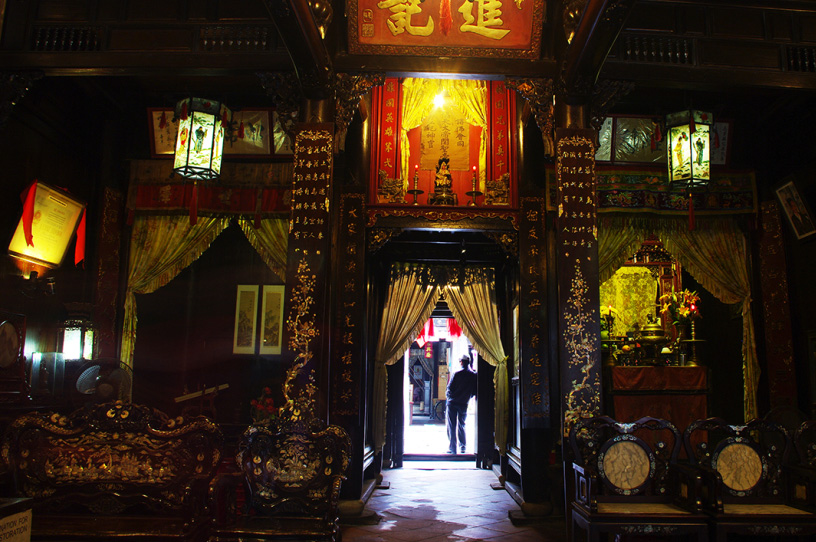
Tran Family Chapel
Tran Family Chapel with a history of over 200 years, has become one of the most well-preserved ancient houses in Hoi An. The design of the house follows a unique garden style for that time period, situated on a spacious 1500m2 land plot. It serves as a repository for highly valuable historical artifacts.
Address: 21 Le Loi – Hoi An Ancient Town.

Quang Dong Assembly Hall
The Quang Dong Assembly Hall was constructed at the end of 1885 and is regarded as one of the most famous and remarkable architectural structures of that time in Hoi An. This place holds numerous beautifully crafted ceramic artifacts. The entire architectural space and interior here are like a depiction of the daily life of Quang Dong people in the past.
Address: 176 Tran Phu Street, Minh An Ward, Hoi An, Quang Nam.

Teochew Assembly Hall
Teochew Assembly Hall is a site you should visit when you come to Hoi An. It holds not only religious and spiritual significance but is also a place for community activities and gatherings of the Teochew people in Hoi An. The assembly hall was built in 1845 to worship sea gods, with the aspiration of seeking favorable conditions for maritime trading.
Address: 157 Nguyen Duy Hieu Street, Hoi An, Quang Nam.
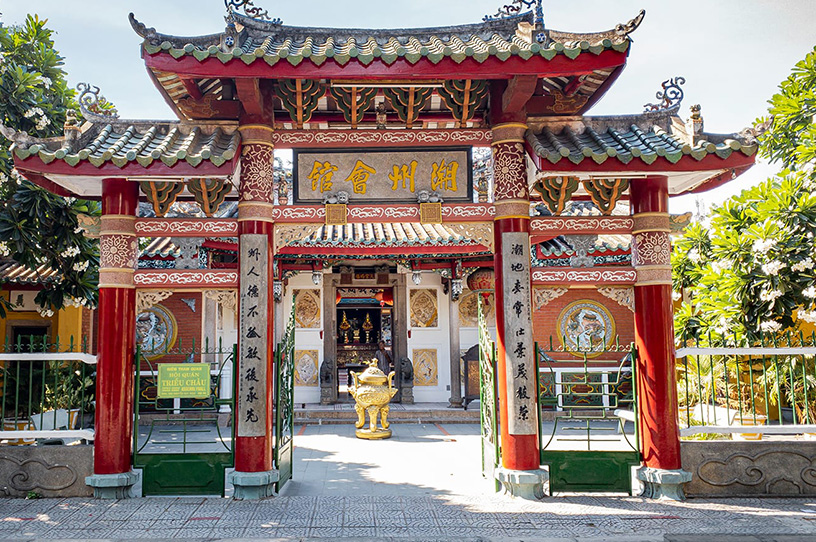
VinWonders Nam Hoi An Entertainment Park
VinWonders Nam Hoi An Entertainment Park is located approximately 15km from the center of the ancient town and is built with a model of a playground and entertainment area combined with a unique cultural, artistic, and architectural experience.

VinWonders Nam Hoi An consists of 5 different themed zones:
- Converging Port: Simulates the trading port scene in the heart of 16th to 17th century Hoi An.
- Folk Culture Island: Gathers the original architectural spaces from various cultural regions across Vietnam, reenacting traditional craft villages.
- River Safari: A place for conserving and developing 50 species of animals with over 550 individuals, including Bengal tigers, antelopes, rhinos, kangaroos, and more.
- Adventure Land: A paradise for thrill-seekers with hundreds of exciting games and activities.
- Water World: Comprises 11 lively and energetic underwater games.
Hoi An Market
This is the largest market in Hoi An situated right by the Hoai River – an ideal destination for those who want to learn about Hoi An’s culture, people, and cuisine. Hoi An Market offers a wide range of goods, from food to fashion items, souvenirs, and handicrafts. You can stroll through the market to explore and then indulge in local specialties such as Hoi An bread, Cao Lau, Mi Quang, and more.

Cu Lao Cham
Cu Lao Cham is a pristine island cluster near Hoi An city. It’s located about 23 km from the center of Hoi An and around 18 km from Cua Dai Port. It consists of 8 small islands forming a crescent shape, with lush green landscapes and extremely diverse ecosystems. When you travel to Cu Lao Cham, you’ll immerse yourself in beautiful turquoise beaches, indulge in snorkeling to admire coral reefs, explore various sites, and learn about the simple life of the local people. The main accommodation services on Cu Lao Cham are homestays and guesthouses.
If you’re departing from Hoi An, there are two transportation options to reach Cu Lao Cham: by speedboat or wooden boat. Speedboats usually depart from Cua Dai and take around 20 minutes to reach Cu Lao Cham, with ticket prices ranging from 150,000 to 200,000 Vietnamese dong per person. Taking a wooden boat from Bach Dang Pier takes nearly 2 hours but is cheaper, costing about 50,000 to 80,000 Vietnamese dong per person. If you bring a motorbike, there’s an additional fee of 30,000 Vietnamese dong per bike.
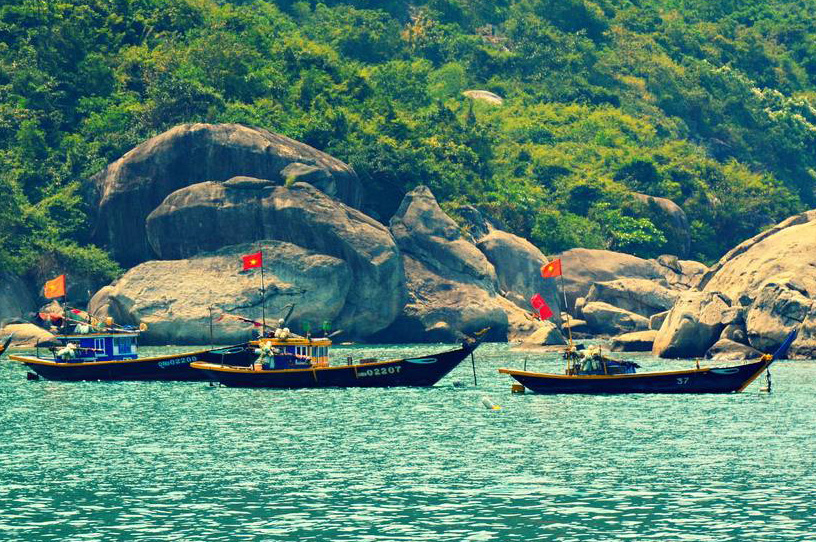
Cua Dai Beach
Cua Dai is a stunning beach located about 5 km from the center of Hoi An’s ancient town. This beach was voted by TripAdvisor as one of the top 25 most beautiful beaches in Asia in 2013. It has become a favorite destination for both tourists and locals. The beach captivates with its long coconut palm trees and white sandy shore combined with clear blue water, creating a romantic backdrop.
Cua Dai Beach now features numerous hotels and high-end resorts, along with sports activities, entertainment, cuisine, and more. It’s sure to provide a memorable experience for you and your family.
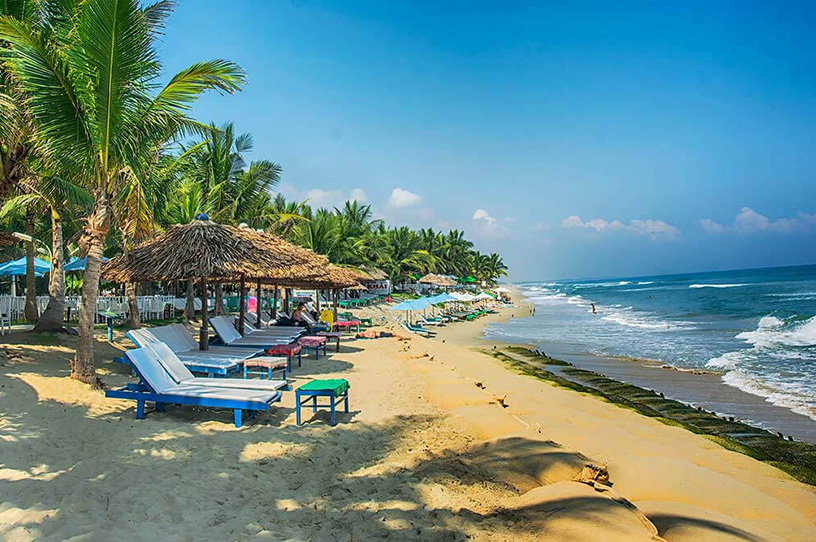
An Bang Beach
Situated about 3 km to the east of Hoi An’s ancient town, An Bang Beach is a renowned tourist spot, having been listed among the 50 most beautiful beaches in the world. The beach stretches for approximately 4 km, featuring a smooth white sandy shore and clear blue waters, making it perfect for travelers seeking a peaceful and romantic setting.
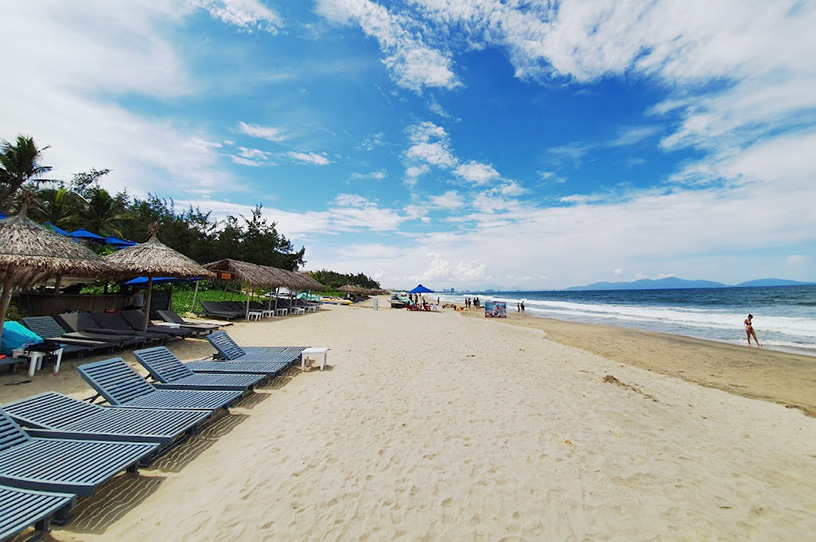
Thanh Ha Pottery Village
Thanh Ha Pottery Village is located just around 3 km from the center of Hoi An. To reach the village, you’ll need to take a boat for about 30 minutes. With a history of over 500 years, this is a traditional village specializing in unique pottery products. Here, you can experience crafting your own pottery piece and purchase beautifully crafted ceramic items.
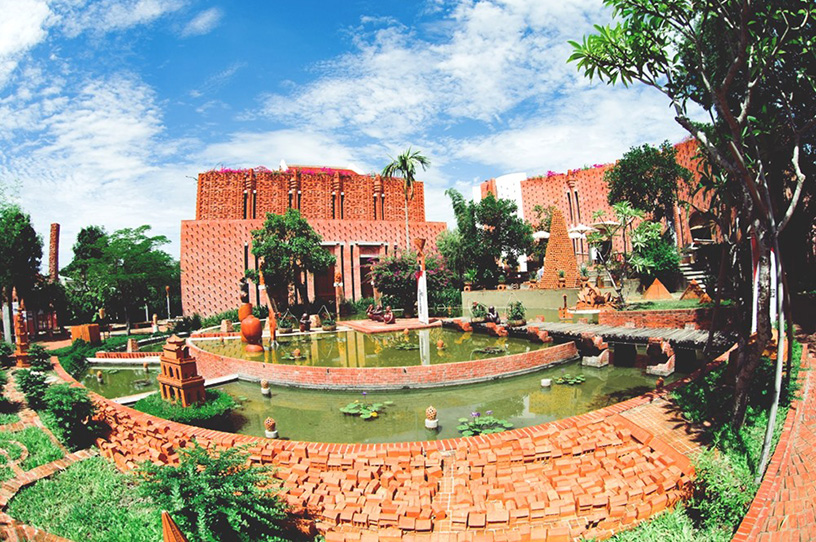
Kim Bong Carpentry Village
Kim Bong Carpentry Village has a history of over 600 years. It’s famous for producing intricate and distinctive wooden products. The village craftsmen can create complex items like houses or boats. Nowadays, artisans also produce souvenir items like sculptures, decorations, and gifts.
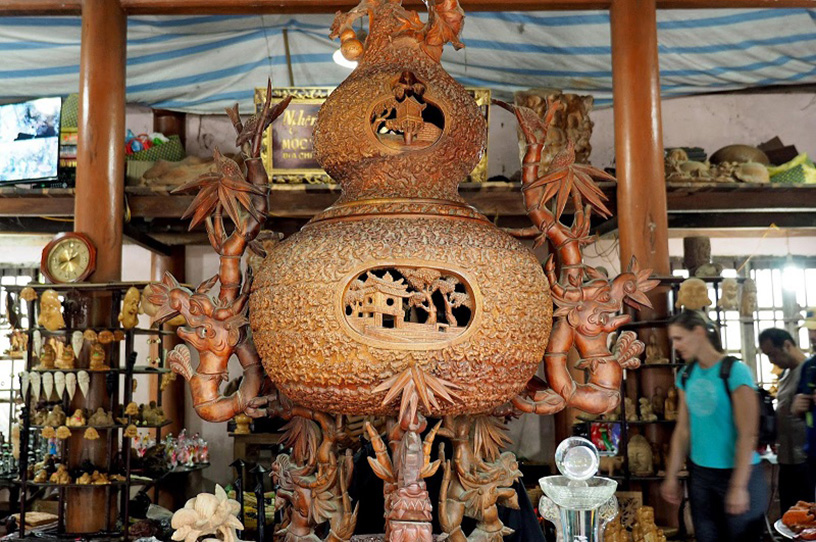
Tra Que Vegetable Village
Tra Que Vegetable Village currently has over 130 households specializing in cultivating various types of greens and spices on an area of about 40 hectares. Visitors can experience the authentic farmer’s life by getting their hands dirty in the fields, planting, and harvesting vegetables. Afterward, you can savor some of the Hoi An specialties made with freshly harvested vegetables.

Bay Mau Coconut Forest
Bay Mau Coconut Forest, also known as Cam Thanh Coconut Forest, is around 3 km from the center of Hoi An. It’s one of the most fascinating tourist destinations in Hoi An, not only attracting domestic tourists but also international ones. When you visit Bay Mau Coconut Forest, you can explore the lush water coconut forest by traditional round bamboo boat, each carrying up to two people. You’ll also enjoy local folk songs and participate in interesting activities like bamboo basket boat rowing and dancing. It’s one of the must-not-miss experiences during your Hoi An trip.

Hoai River
The Hoai River runs through the center of the ancient town and possesses its own unique charm, especially during festivals. You can experience boat rides on the Hoai River, admiring the sparkling lights on both sides of the streets at night. Additionally, you can participate in the tradition of launching flower lanterns onto the river, making wishes for luck and goodness.
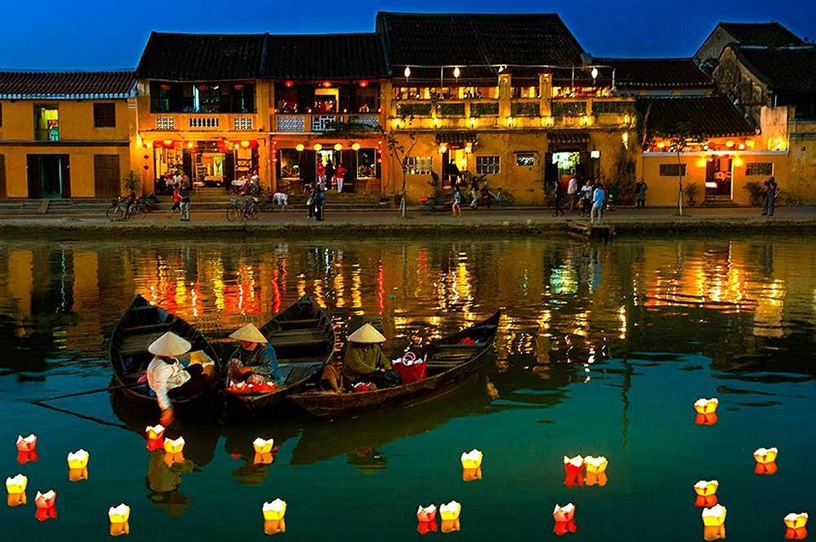
Read more: Show in Hoi An

Day Tours to Explore Hoi An
As for day tours in Hoi An, there are several options available to visit various attractions in and around the town. These tours are a great way to explore the culture, history, and natural beauty of the region.
What to Eat in Hoi An?
Hoi An offers a diverse and exquisite culinary experience. Here are some typical dishes you should not miss:
- Hoi An Chicken Rice: You can try this famous dish at places like “Com Ga Ba Buoi” (26 Phan Chau Trinh) or “Com Ga Ba Huong” (Sica alley).
- Banh Mi Hoi An (Hoi An-style Baguette): The most famous places to try this delicious sandwich are “Banh Mi Phuong” (2B Phan Chu Trinh) and “Banh Mi Bich” (57 Phan Chu Trinh).
- Banh Xeo Hoi An (Hoi An-style Sizzling Pancake): Some popular spots to savor this dish are “Quan Gieng Ba Le” (45/51 Tran Hung Dao) and “Banh Xeo Hai Dao” (160 Ly Thai To, Cam Chau, Hoi An).
- Mi Quang (Quang-style Noodles): You can enjoy this well-known dish at “Mi Quang Ong Hai Hoi An” (6A Truong Minh Luong, Hoi An) or “Mi Quang di Hat” (4 Phan Chau Trinh, Hoi An).
- Cao Lau (Hoi An-style Noodles): For this distinctive dish, you can try “Quan Cao Lau Thanh” (26 Thai Phien, Minh An, Hoi An), “Quan Cao Lau Lien” (21B Thai Phien, Minh An, Hoi An), or “Quan Cao Lau Hoi An Ba Be” (19 Tran Phu, Cam Chau, Hoi An).
Indulge in these delightful dishes to fully experience the culinary delights of Hoi An.
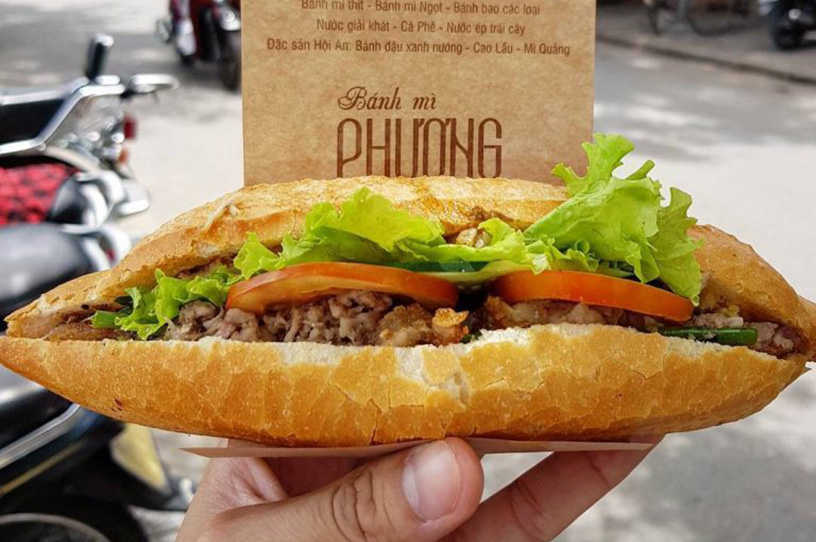
Read more: Vietnamese Bread – Simple and Exquisite You Should Try
What to Buy in Hoi An?
Hoi An is renowned for its 300-year history of silk export to Asian and European countries. Hoi An silk is not only prized for its soft and luxurious texture from natural silk fibers but also carries the cultural and historical significance of the town. Therefore, when traveling to Hoi An, you should consider buying products made from silk, such as scarves, clothes, and more.
In addition, handcrafted artisanal products are also worth purchasing. They are diverse and can be found in abundance in shops lining both sides of the streets in the center of Hoi An Ancient Town.

Read more: Top 10 Souvenirs to Buy When Traveling Vietnam
Some Notes for Visiting Hoi An:
- Some tourist sites within the ancient town may require an entrance ticket, so it’s advisable to ask your travel company or guide about this beforehand.
- Don’t miss the opportunity to explore Hoi An in the evening when the ancient town is beautifully lit up.
- Cycling is the best way to discover Hoi An and avoid the noise of motor vehicles in the ancient town.
Read more: 12 Best Places to Visit in Vietnam
Conclusion
Hoi An Ancient Town is like a painting showcasing the beauty of Vietnam’s bygone era. You can experience the serenity, friendliness, and elegance of Hoi An during your visit, leaving you with unforgettable memories. We hope the valuable information about Hoi An Ancient Town provided here will help enhance your experience before you set out to explore this enchanting place. Please feel free to leave a comment after your Hoi An adventure.
Most of our Vietnam tour packages include a visit to Hoi An. If you have plans to travel to Vietnam, don’t hesitate to contact our professional travel advisors for the best deals.


